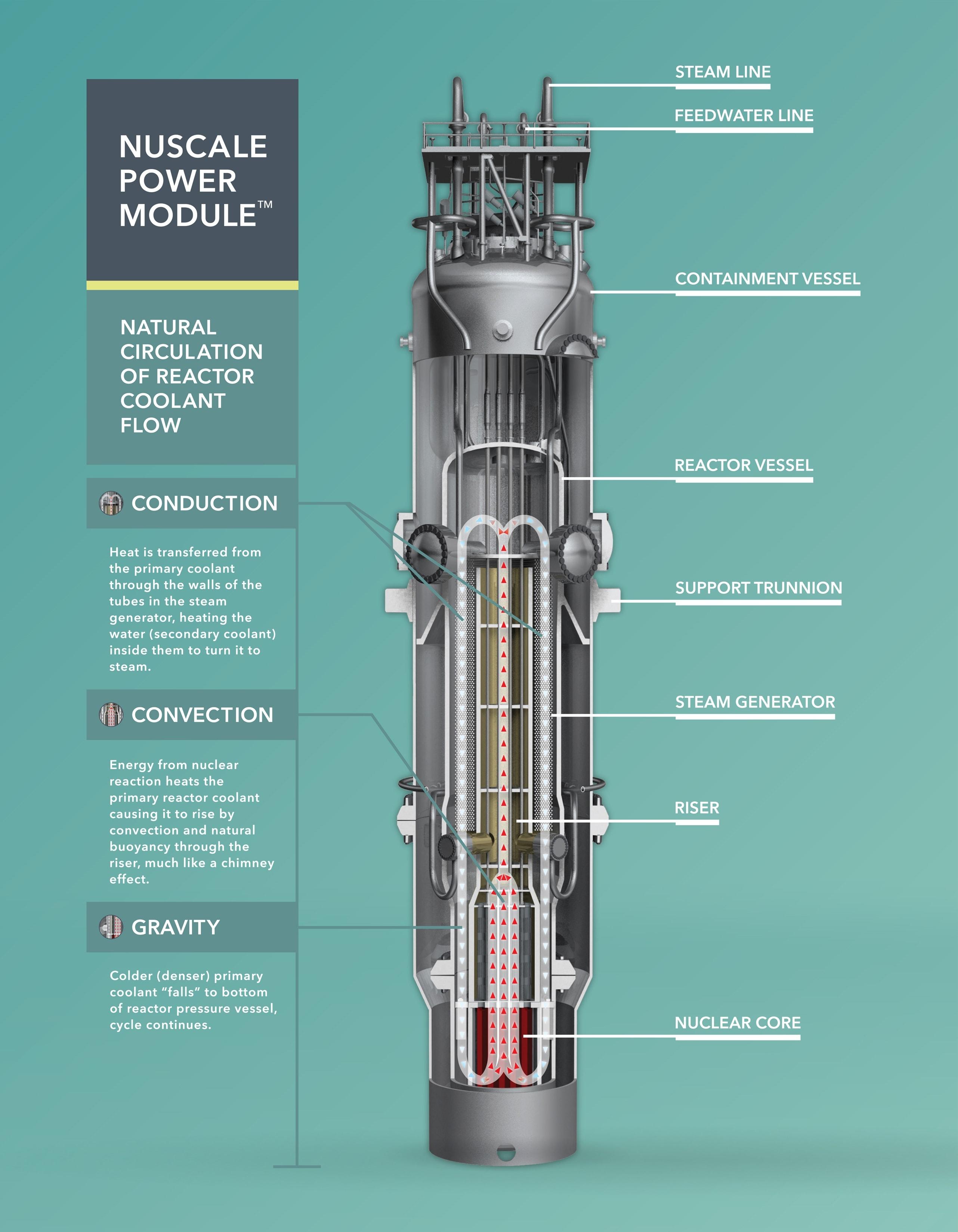Small modular reactors (SMRs) are an innovation on nuclear plant design that could replace coal-fired steam turbines with zero or near-zero carbon emissions.
While there are approximately 50 SMR designs around the world, only NuScale, an SMR-startup based in Portland, Oregon, has sought US licensing.
NuScale cleared stage one of the US Nuclear Regulatory Commission (NRC) approval process in April, 2018 leading to hopes for a renewed US nuclear energy program.
“Renewables are not capable of meeting 100 percent of our global energy needs,” says NuScale Communications Director Mariam Nabizad. “By adding the reliable, flexible carbon-free energy NuScale can provide to complement solar and wind, we can make a real difference in mitigating climate change. This remains a top priority for our customers and prospects, both across the U.S. and around the world.”
Here’s what you need to know about this technology in the context of renewables:
BASICS OF SMR
The key word for the SMR nuclear reactor design is ‘flexible’.
- They can provide variable output to “load-follow”, which keeps an electrical grid balanced as renewables like sun and wind rise and fall, and demand varies.
- They can power small grids or provide graduated support on a big one.
- They can provide options for utility companies to diversify into reduced-carbon nuclear power without the large scale investment of standard plants.
SMRs currently represent a favorable interim investment for North American nuclear energy, which has slowed construction of standard nuclear designs in recent years.
The US leads the world nuclear industry in reactor design. But while the US has more operating reactors (61 plants, 99 reactors, constructing 2 reactors ), recently China (40 reactors, constructing 20 reactors) and Russia (35 reactors, constructing 20 reactors) have become far more efficient at rolling out the technology for public use.
Civilian use of nuclear power has geopolitical implications. In 2016 the US Secretary of Energy Ernest Moniz warned that the failure to invest in nuclear energy had the potential to significantly weaken the US’s position in global non-nonproliferation negotiations.
As the first, and only SMR design to seek US licensing NuScale is leading the pack to restore the US nuclear economy. NuScale’s product design was funded by $228 million in grants from the US Department of Energy, it’s first customer is the municipal association Utah Associated Municipal Power Systems and the potential buyers reported by the New York Times include Tennessee Valley Authority. Future design competitors may include Westinghouse with an SMR design on hold, GE as a recent market entry with a boiling water design, and even smaller “microreactor” designs from HolosGen and Oklo.
Across the border, Canada’s federal authority, the Canadian Nuclear Safety Commission (CNSC), is rapidly collecting public feedback in the midst of updating its regulatory strategy for SMRs.
“CNSC is addressing key questions about the regulatory and licensing implications presented by SMRs,” says Cristina Canas, a senior communications advisor. “To meet regulatory requirements, safety claims must be supported by suitable scientific information.”
No energy technology is without debate. SMRs haven’t had a chance to prove themselves in the day-to-day life of North Americans. This is why there are both passionate proponents and dire predictions of gloom regarding their future.
However, when it comes to utilizing new technology, society always includes a wide spectrum of tech innovators, early-adopters, late-adopters and laggards. So, the best way to beat the hype, pacify naysayers, and determine the true commercial viability of a new product is from a trial of pragmatic implementation.
Here’s hoping NuScale can execute its vision to offer the world a safer and more flexible energy to complement renewables!





